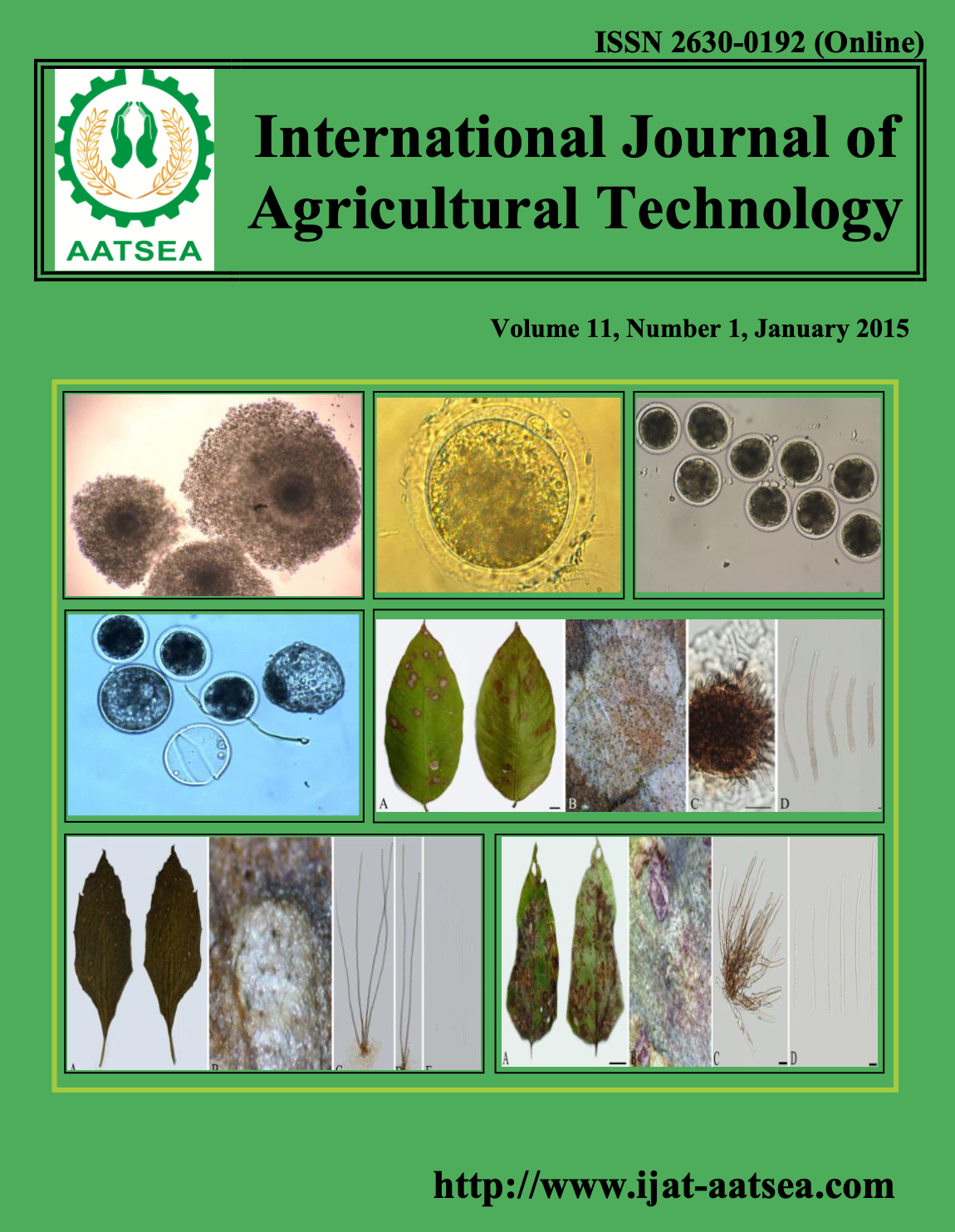The impact of rainfall fluctuation on days and rubber productivity in Songkhla Province
Main Article Content
Abstract
Article Details

This work is licensed under a Creative Commons Attribution-NonCommercial-NoDerivatives 4.0 International License.
References
Craufurd, P. Q. and Wheeler, T. R. (2009). Climate change and the flowering time of annual crops. Journal of Experimental Botany 60:2529-2539.
Cynthia, R. and Parry, M. L. (1994). Potential impact of climate change on world food supply. Nature 367:133-138.
Doungmusik, A. and Sdoodee, S. (2012). Enhancing the latex productivity of Hevea brasiliensis clone RRIM 600 using ethylene stimulation. Journal of Agricultural Technology 8:2033-2042.
IPCC (2007a). Climate change (2007). The Physical Science Basis. Summary for policymakers. Paris: WMO/UNEP. pp. 21.
IPCC (2007b). Climate change (2007). Impacts, Adaptation and Vulnerability. Contribution of Working Group II to the Fourth Assessment Report of the Intergovernmental Panel on Climate Change. UK: Cambridge. pp. 7-22.
Jiang, A. (1988). Climate and natural production of rubber (Hevea brasiliensis) in Xishuangbanna, southern part of Yunnan province, China. Journal of Biometeorological 32:280-282.
Johnston, A. (1989). Diseases and Pests. New York: Longman Scientific and Technical. pp. 413-458.
Joseph, T. and Jacob, J. (2010). Supply instability in natural rubber owing extreme and unusual weather events and impact on price formation. Proceedings of the International workshop on climate change and rubber cultivation: R and D priorities July. pp. 28-30.
Limsakul, A., Limjirakan, S. and Sriburi, T. (2010). Observed changes in daily rainfall extremes along Thailand’s coastal zone. Journal of Environmental Research 32:49-68.
Maslin, M. (2004). Global Warming. Oxford: Oxford University.
Moraes, V. H. F. (1977). Rubber. In Alvim, P. T. and Kozlowski, T. T. (Eds.), Ecophysiology of tropical crops. New York: Academic.
RRIT. (2013). Trend of latex price in (2013). Department of Agriculture. Ministry of Agriculture and Cooperatives.
Ruderman, S., Kangsawadworakul, P., Vibooniun, U., Mongkolporn, O. and Chreatin, H. (2012). Mitochondrial/cytosolic acetyl coA and rubber biosynthesis genes expression in Hevea brasiliensis latex and rubber yield. Kasetsart Journal Natural Science 46:346-362.
Sanjeeva, R. P. and Vijayakumar, K. R. (1992). Climatic requirements. In Sethuraj, M. R., Mathew, N. M. (Eds.), Natural Rubber: Biology, Cultivation and Technology. London: Elsevier
Satheesh, P. R. and Jacob, J. (2011). Impact of climate warming on natural rubber productivity in different agro-climatic regions of India. Natural Rubber Research 24:1-9.
Sdoodee, S. (2007). The influence of global warming on phenological change of mangosteen (Garcinia mangostana L.) in Songkhla. Proceedings of the 33rd Congress on Science and Technology, Thailand (STT33) “Science & Technology for Global Sustainability”, Nakhon Si Thammarat, 18-20 October 2007. pp. 3
Tressferth, K. E. (2003). The global hydrological cycle: How should precipitation change as climate change?. Proceedings of A presentation on scoping meeting of IPCC; WGI Forth Assessment Report, Potsdam, Germany.
Watson, G. A. (1989). Climate and soil. New York: Longman Scientific and Technical. pp. 125-164.


